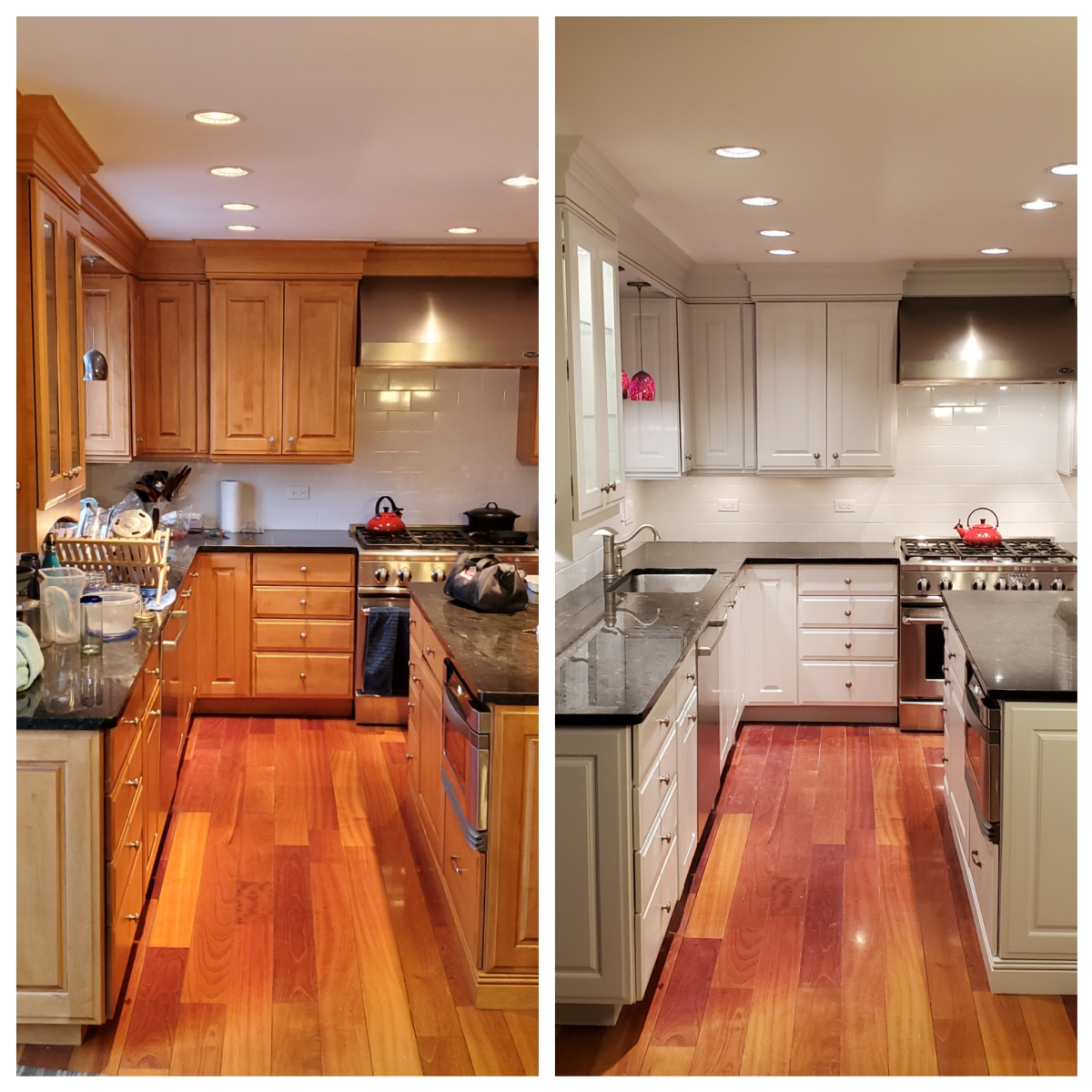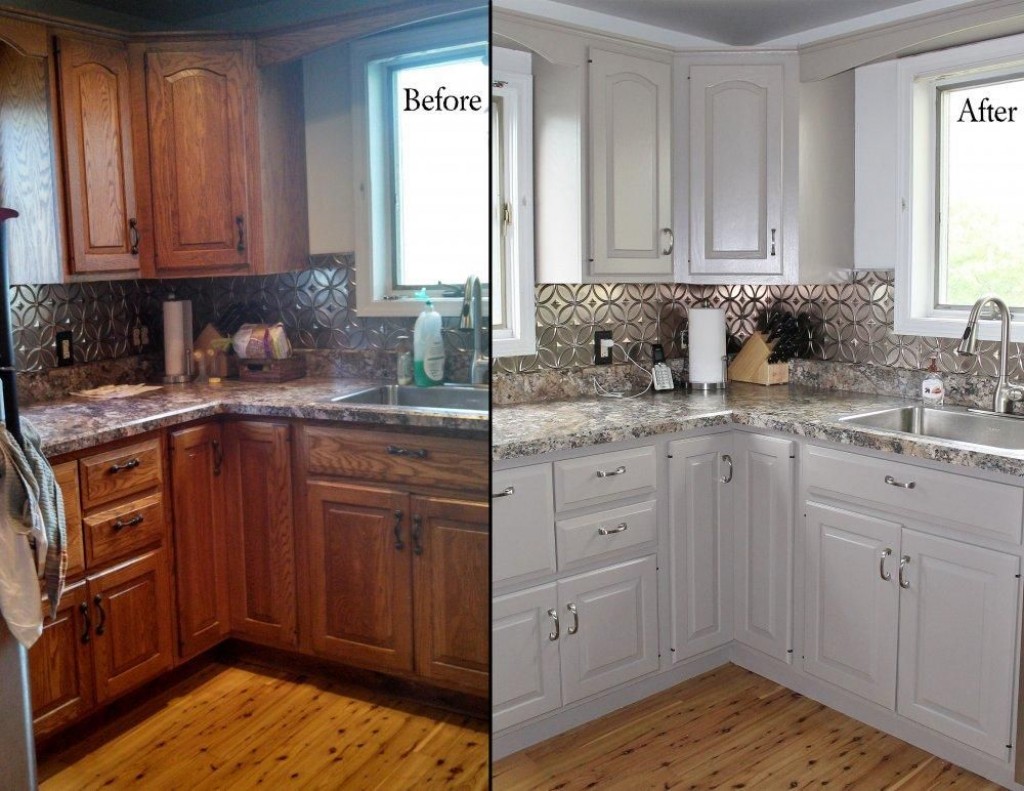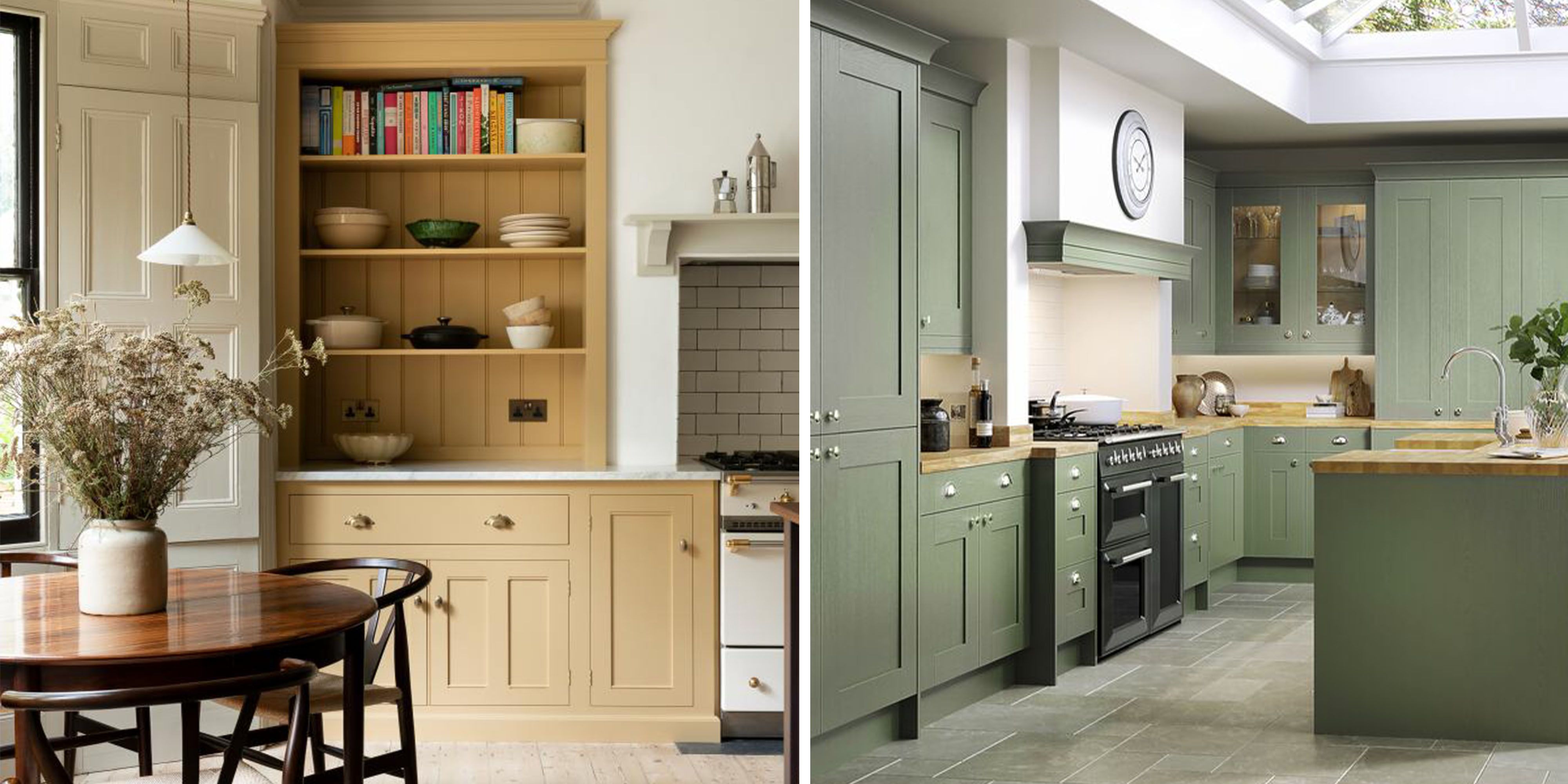Choosing the Right Spray Paint

Choosing the right spray paint for your kitchen cabinets is crucial for achieving a durable and aesthetically pleasing finish. You’ll need to consider factors such as the type of wood, existing finish, and the desired look.
Types of Spray Paint for Kitchen Cabinets
The most common types of spray paint for kitchen cabinets are oil-based, latex, and enamel. Each type offers unique advantages and disadvantages, making it essential to choose the right one for your project.
- Oil-Based Spray Paint: Known for its durability and resistance to moisture and stains, oil-based paint is an excellent choice for high-traffic areas like kitchens. It offers a hard, glossy finish that can withstand frequent cleaning. However, it has a longer drying time, emits strong fumes, and requires the use of mineral spirits for cleanup.
- Latex Spray Paint: Latex spray paint is water-based, making it easier to clean up and offering low VOC emissions, making it a more environmentally friendly option. It dries quickly and is available in a wide range of colors. However, latex paint is less durable than oil-based paint and may not be as resistant to scratches and moisture.
- Enamel Spray Paint: Enamel spray paint is a type of oil-based paint known for its hard, durable finish. It provides excellent resistance to scratches, chips, and fading. Enamel paint is often used for high-quality finishes, but it requires proper preparation and can be challenging to apply.
Comparing Spray Paint Types, Spray paint for wood kitchen cabinets
The following table summarizes the key features of different spray paint types:
| Type | Durability | Drying Time | Suitability for Wood Finishes |
|---|---|---|---|
| Oil-Based | High | Long (24-48 hours) | Suitable for most wood finishes, including raw wood, stained wood, and previously painted surfaces. |
| Latex | Medium | Short (1-2 hours) | Suitable for raw wood and previously painted surfaces. May not adhere well to glossy or heavily sealed surfaces. |
| Enamel | High | Long (24-48 hours) | Suitable for most wood finishes, including raw wood, stained wood, and previously painted surfaces. Requires proper preparation. |
The Importance of Primer Selection
Primer plays a crucial role in achieving a smooth and even finish when painting kitchen cabinets. It acts as a bonding agent between the paint and the wood surface, ensuring better adhesion and preventing the paint from chipping or peeling.
- Adhesion Primer: This type of primer helps the paint adhere to surfaces that are difficult to paint, such as glossy surfaces or previously painted surfaces. It creates a rough texture that allows the paint to grip better.
- Stain-Blocking Primer: If your kitchen cabinets have stains or blemishes, a stain-blocking primer will help prevent them from showing through the paint.
- Sheen Primer: This primer helps to create a smooth, even surface that is ideal for applying paint. It can help to hide imperfections in the wood and create a more professional finish.
Choosing the right primer is essential for achieving a successful paint job. Consider the type of wood, the existing finish, and the desired look when selecting a primer.
Preparation and Application Techniques

Spray paint for wood kitchen cabinets – Preparing your kitchen cabinets for spray painting is crucial for achieving a professional-looking finish. This involves a thorough cleaning process to remove any grease, grime, or old paint, followed by sanding to create a smooth surface for the new paint to adhere to. Finally, masking off areas you don’t want to paint is essential for preventing accidental overspray.
Preparing Kitchen Cabinets
Proper preparation is key to a successful paint job. This section will cover the essential steps involved in preparing your kitchen cabinets for painting, ensuring a smooth and long-lasting finish.
- Cleaning: Begin by thoroughly cleaning the cabinets with a degreaser to remove any grease, grime, or old paint. This ensures proper adhesion of the new paint.
- Sanding: After cleaning, lightly sand the cabinets using fine-grit sandpaper (120-180 grit) to smooth out any imperfections and create a surface that allows for better paint adhesion. For older cabinets with multiple layers of paint, you may need to use a coarser grit sandpaper initially.
- Masking: Before painting, protect surrounding areas by masking off anything you don’t want to be painted. Use painter’s tape to cover countertops, walls, and other surfaces.
Applying Spray Paint to Cabinets
Applying spray paint to cabinets requires a systematic approach and attention to detail. This section will guide you through the process, ensuring a smooth and even finish.
- Ventilation: Always work in a well-ventilated area when using spray paint. Open windows and doors to ensure proper air circulation and prevent the buildup of harmful fumes.
- Thinning: If the spray paint is too thick, it can clog the nozzle and result in an uneven finish. Follow the manufacturer’s instructions for thinning the paint if necessary.
- Test Spray: Before applying the paint to the cabinets, test spray on a scrap piece of wood to ensure the spray pattern is even and the paint is the desired consistency.
- Even Coats: Apply thin, even coats of paint, allowing each coat to dry completely before applying the next. Overlapping each coat slightly helps to ensure even coverage.
- Drying Time: Allow the paint to dry completely between coats. Drying time varies depending on the type of paint and environmental conditions. Consult the manufacturer’s instructions for specific drying times.
Common Mistakes to Avoid
While applying spray paint, there are common mistakes that can lead to an uneven or unsatisfactory finish. Understanding these pitfalls and taking preventive measures can help you achieve a professional-looking result.
- Runs and Drips: Applying too much paint at once or not allowing the previous coat to dry completely can lead to runs and drips. Avoid this by using thin coats and allowing adequate drying time between coats.
- Uneven Coverage: Holding the spray can too close or moving it too quickly can result in uneven coverage. Maintain a consistent distance from the surface and move the can smoothly in a back-and-forth motion.
- Overspray: Overspray occurs when paint particles drift onto surfaces you didn’t intend to paint. Minimize overspray by using painter’s tape to mask off surrounding areas and working in a well-ventilated area.
Finishing Touches and Maintenance: Spray Paint For Wood Kitchen Cabinets

After applying the final coat of spray paint, there are several finishing touches you can add to enhance the look and durability of your painted kitchen cabinets. Proper maintenance is also crucial to keep your cabinets looking their best for years to come.
Achieving a Professional Finish
Achieving a professional-looking finish requires meticulous attention to detail. Sanding between coats, applying a clear sealant, and knowing how to handle touch-ups are essential steps.
- Sanding Between Coats: Lightly sanding between coats with fine-grit sandpaper (220-400 grit) helps to smooth out any imperfections and create a more even surface for the next coat. This process helps to achieve a smoother and more professional finish.
- Applying a Clear Sealant: A clear sealant provides a protective layer that shields the paint from scratches, stains, and moisture. It also enhances the durability and gloss level of the paint finish. Polyurethane is a popular choice for kitchen cabinets due to its resistance to water and abrasion.
- Handling Touch-Ups: Touch-ups are inevitable, especially in high-traffic areas. To ensure a seamless blend, use a small brush to apply the same paint color as the original coat, allowing it to dry thoroughly before applying a clear sealant to match the rest of the cabinets.
Maintaining Painted Cabinets
Proper maintenance is essential for preserving the beauty and longevity of your painted kitchen cabinets. This includes regular cleaning and protecting them from damage.
- Cleaning Methods: Use a mild soap and water solution to clean your cabinets regularly. Avoid harsh chemicals or abrasive cleaners that can damage the paint finish. For tougher stains, a gentle cleaner with a microfiber cloth can be used.
- Protecting Cabinets from Damage: To prevent scratches and dents, use protective pads on cabinet doors and drawers. Additionally, be mindful of sharp objects that could come into contact with the cabinets.
Enhancing the Look of Painted Cabinets
Adding decorative hardware or creating a unique color scheme can significantly enhance the overall look of your painted cabinets.
- Decorative Hardware: Replacing old hardware with new, stylish knobs or pulls can instantly upgrade the look of your cabinets. Consider materials like brushed nickel, polished brass, or antique bronze to complement your kitchen’s décor.
- Unique Color Scheme: Experimenting with different paint colors can create a dramatic transformation. You can choose a bold color for the cabinets and complement it with a neutral color for the walls or vice versa. For a modern look, consider using two-toned cabinets with a contrasting color on the lower portion.
Spray paint can breathe new life into tired wood kitchen cabinets, but before you grab the can, consider the bigger picture. Are wood kitchen cabinets even making a comeback? Are wood kitchen cabinets coming back is a question worth asking, as it might influence your decision on whether to invest in a quick fix or a complete overhaul.
No matter your answer, a fresh coat of spray paint can always add a touch of personality and style to your kitchen.
A fresh coat of spray paint can breathe new life into tired wood kitchen cabinets, but don’t forget about the clutter that often accompanies a kitchen makeover! Consider investing in a small storage unit for bedroom to organize your kitchen essentials and free up valuable countertop space.
After all, a well-organized kitchen is just as important as a beautifully painted one.
